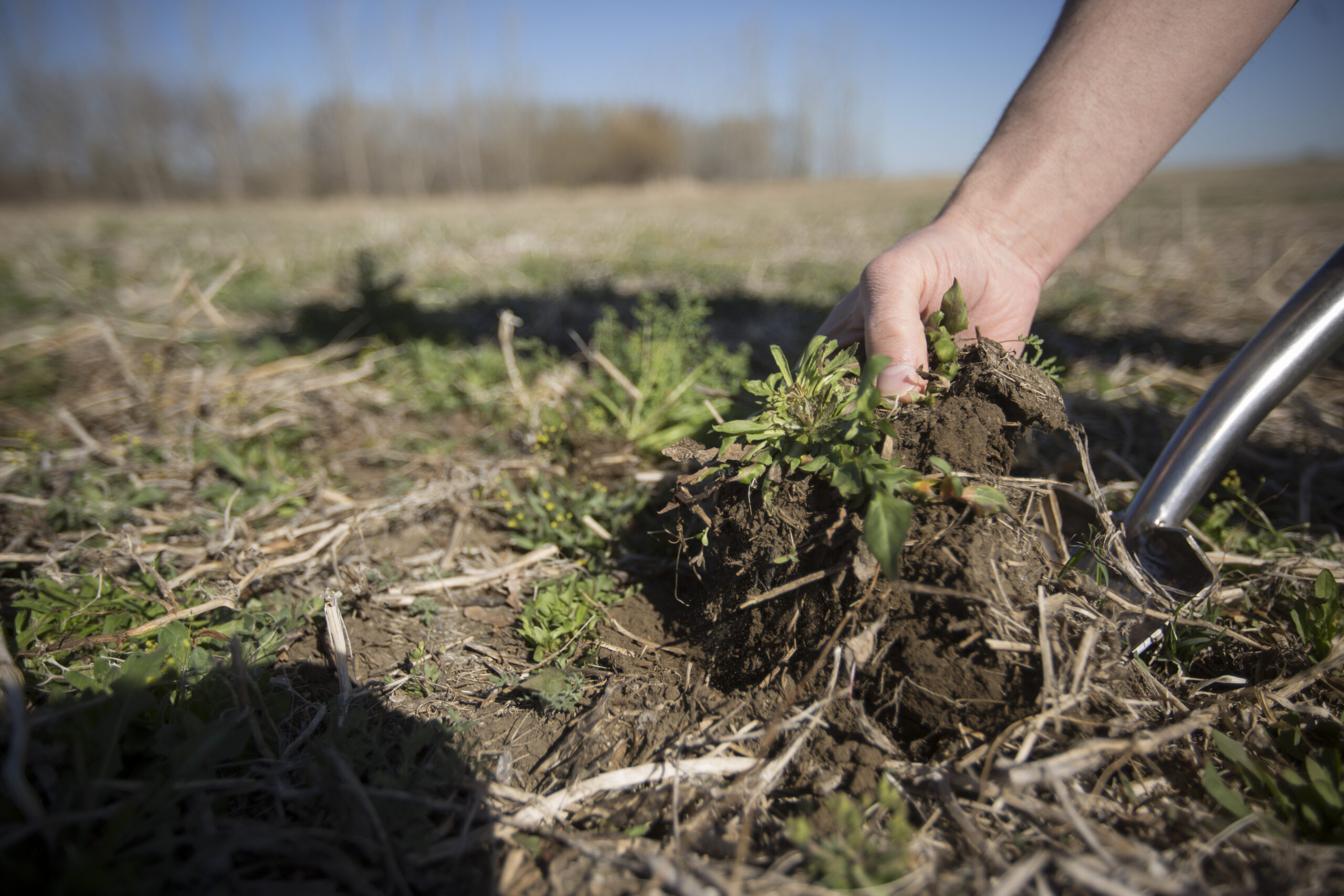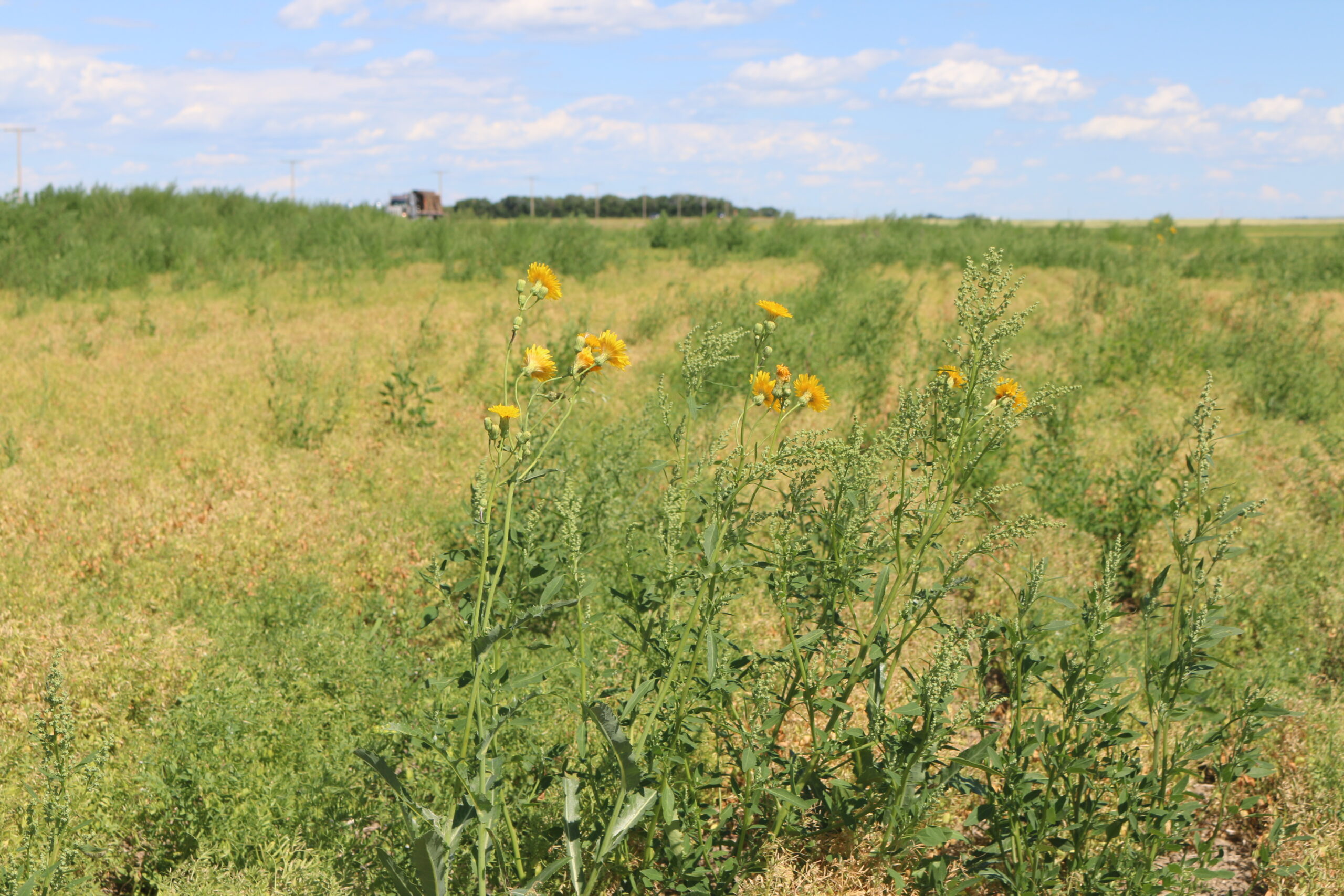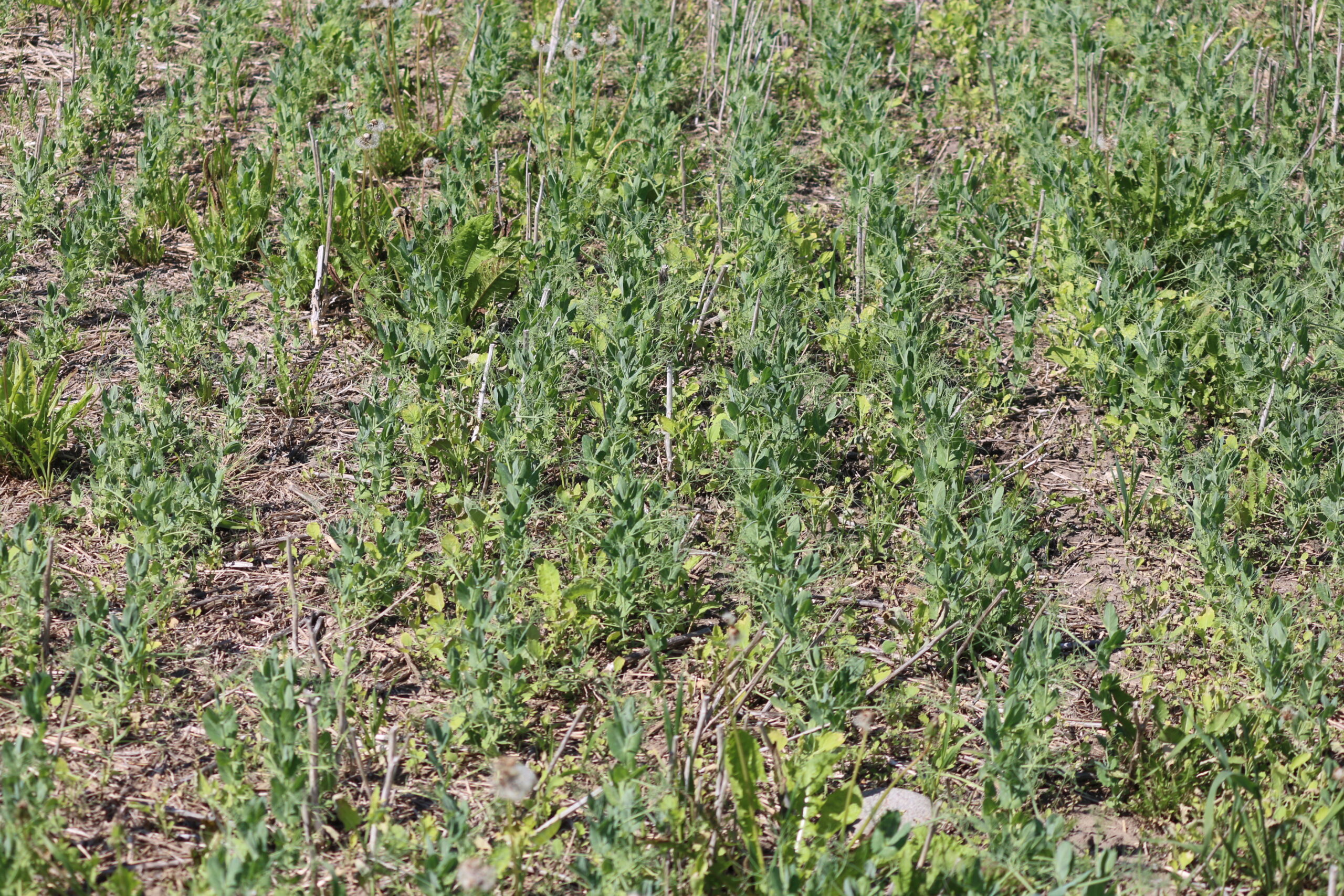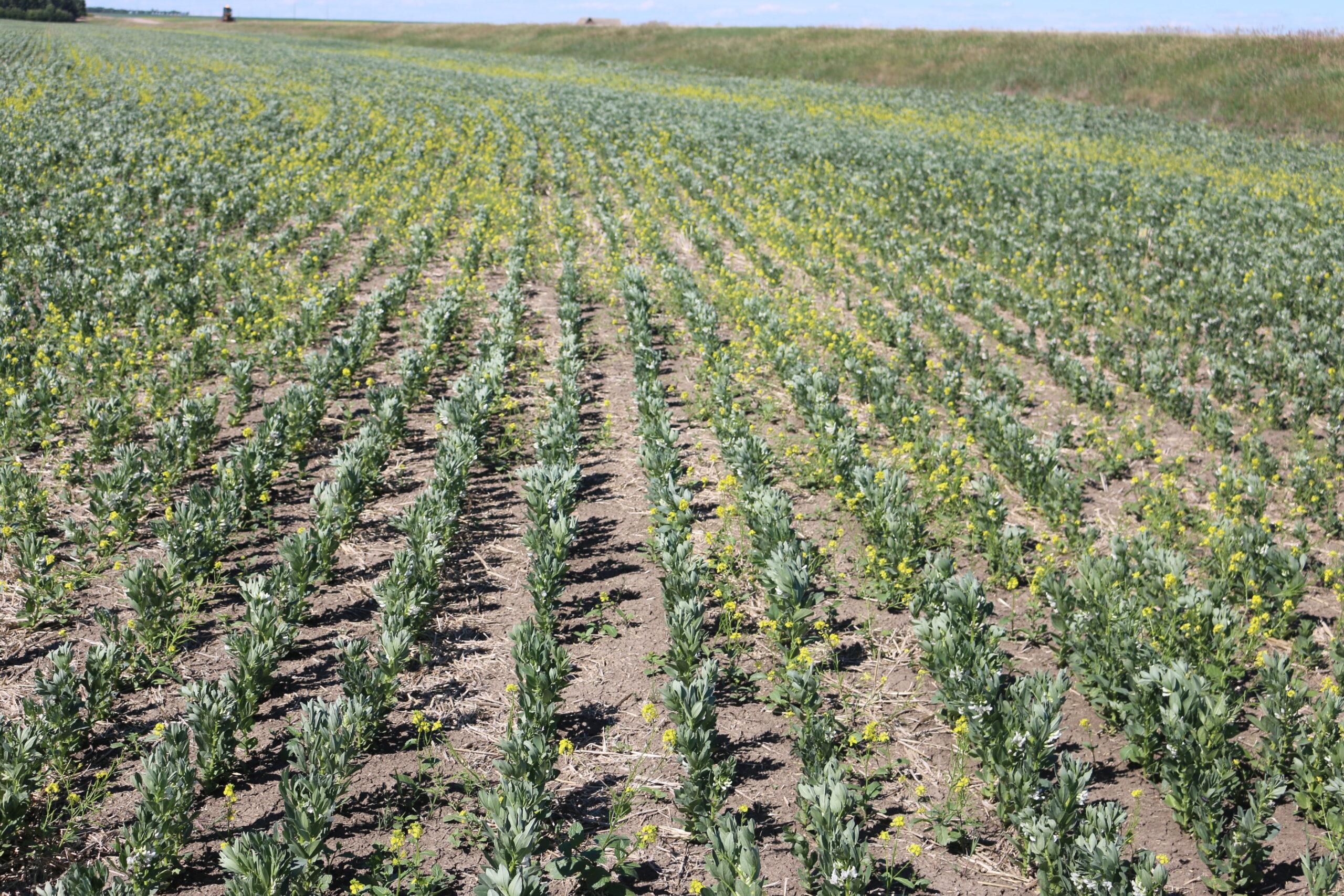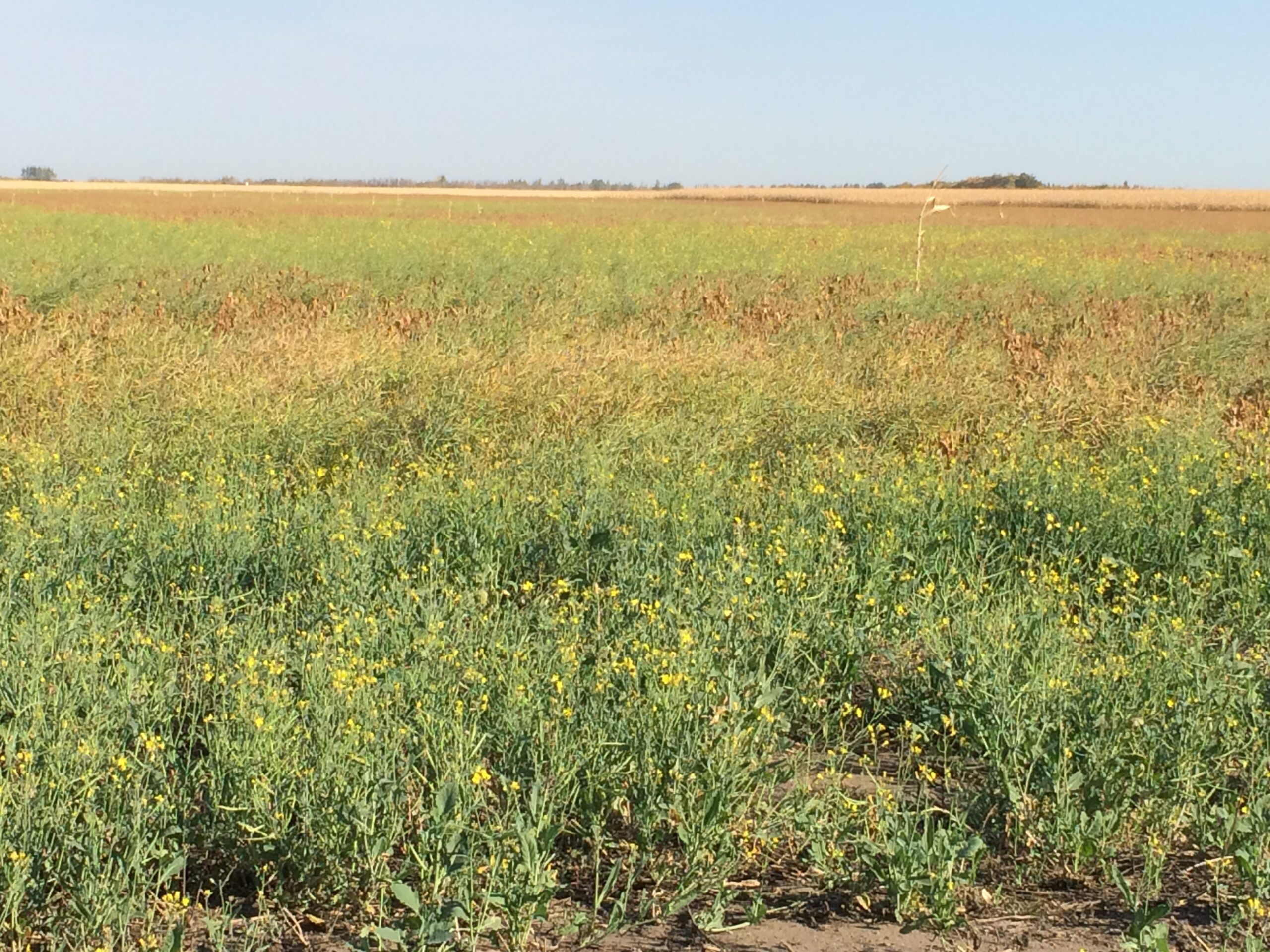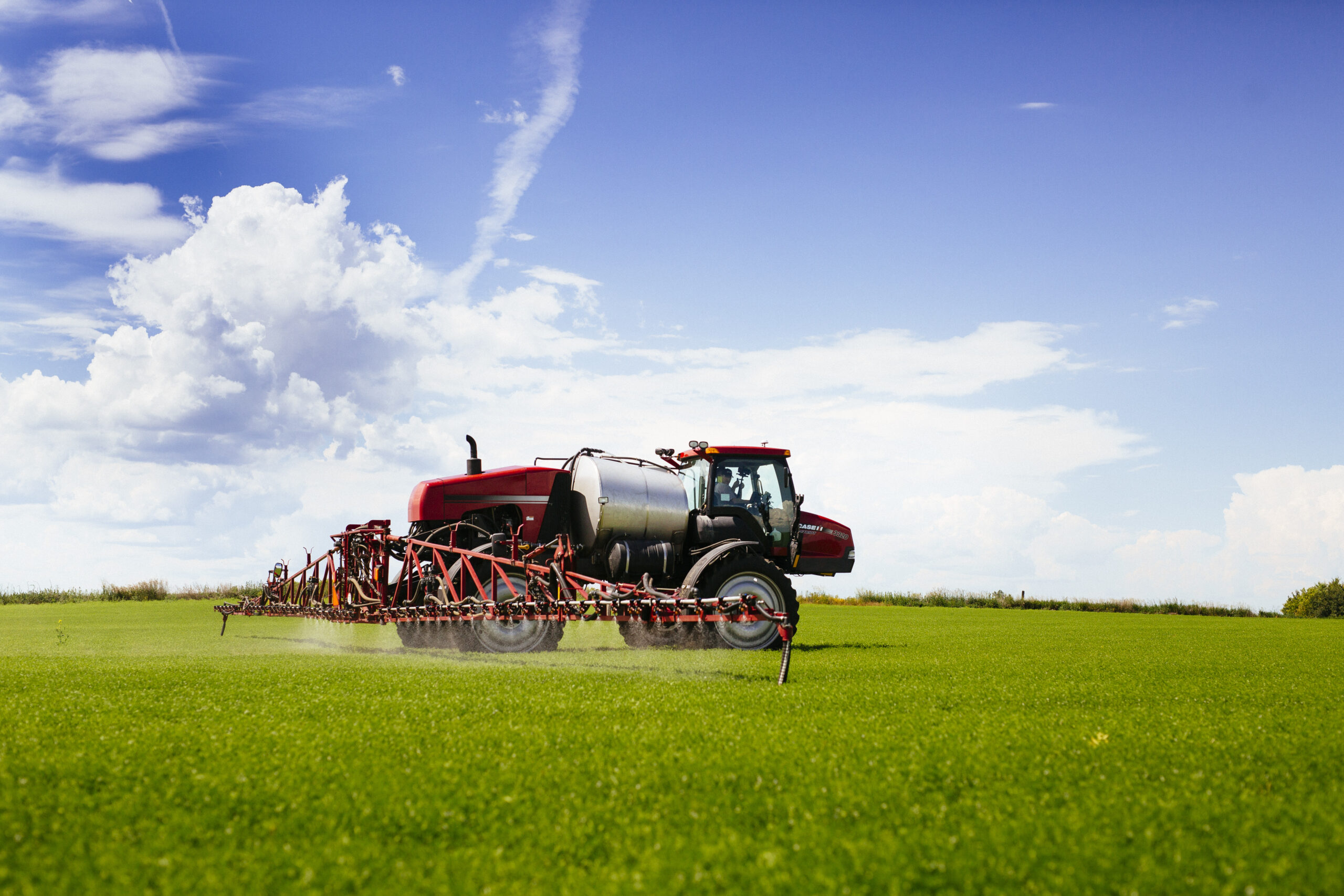By Clare Stanfield
We have all seen them in the field—shiny black ground beetles scuttling around on the soil surface. Maybe you have even caught one eating a slug or a caterpillar. But did you know that some of these amazing bugs are also seed-eaters, particularly of weed seeds? It begs the question: how useful are ground beetles as a weed management tool?
Quite useful, as it turns out. “I cannot emphasize enough that the second most common way weed seeds leave the seed bank is through consumption by seed predators,” says Dr. Chris Willenborg, associate professor and head of the Department of Plant Sciences at the University of Saskatchewan.
The weed seed bank refers to all the viable weed seeds found cached on and within a field’s soil profile and is responsible for nearly all the weeds farmers find growing alongside their crops. Weed seeds leave the seed bank in several ways, but the greatest proportion of them will either germinate or be eaten by predators like ground beetles.
This is particularly important information for pulse growers who have limited herbicide options for their crops. No one is saying that ground beetles, collectively known as carabids, are a herbicide replacement, but Dr. Willenborg would like pulse growers to know more about the role these insects can play in overall weed management systems, and how to protect them and therefore their usefulness.
The Feeding Ground: The weed seed bank and carabids
“What we know from historical surveys is that the overall number of weeds has declined over time, so the weed seed bank should be lower, but there is not really a correlation there,” says Dr. Willenborg. “The curveball is that weed resistance is going up and this could be contributing more to the weed seed bank.”
Seed dormancy in the seed bank is another curveball. “There is such a poor correlation between what is in the weed seed bank and what emerges, you often do not know what you are going to have in a field until you have it,” he says. “That is why carabids are so important— they eat seeds during a time period in which growers are often not applying weed control measures, from late summer through to early spring.”
Dr. Willenborg says there are over 900 species of carabids in Canada, a significant number of which are on the Prairies. “Species differ in terms of when they become prominent, but the greatest number of seedeaters are active in June, July, and August,” he says. “Some carabids are highly specialized to consume seeds.”
So, what are they eating? Mostly seeds that have been shed during the crop year. “In a pulse crop, the weed seed bank is often a function of seeds shed in the prior crop,” says Dr. Willenborg, adding that no matter what crop comes before pulses—wheat, canola, barley—it usually has more weed control options so weed seed build-up is smaller going into a pulse crop than into other crops.
In fact, he says, you could argue that pulse crops, with their limited herbicide options, make a positive contribution (that is, make a bigger deposit) to the seed bank, which is another reason it is important to protect carabids during the pulse rotation—they will consume a lot of the surface weed seeds before they get into that bank. “The previous crop also tends to matter more for carabid populations,” says Dr. Willenborg. “Canola crops before a pulse crop tends to substantially increase the carabid population.”
Carabid Care
Carabids emerge as larvae in the spring and metamorphosize into adult beetles by the late summer when they feed on seeds. Adults overwinter in the soil, hedgerows, shelterbelts, under logs—any rough, natural area that provides protection.
Dr. Willenborg says that much of the research around carabids within farming systems comes from the United States and European Union where practices like using cover crops, companion, and relay crops, and regularly planting forage crops, have been shown to help improve carabid populations because they cover the soil and protect habitat. “The one thing we have got right is no-till, this is very supportive of carabids,” he says. “But we have been poor at the other things.”
Part of that comes down to decades-long practices aimed at eliminating anything from a crop that “should not be there” to maximize crop growth. But as more farmers turn to practices like cover and companion cropping in a growing movement to improve soil health and productivity, carabid survival during the cropping season may be improving. “Keeping natural organisms in the field is important for biodiversity, important for chemical reduction, and helping farmers reach net-zero emissions goals,” says Dr. Willenborg.
He encourages farmers to think about other non-cropping practices that can help protect carabid overwintering habitats, such as maintaining hedgerows and shelterbelts and maintaining wetlands (the riparian areas are good carabid habitats). “Even leaving old homestead sites alone, these are all non-crop habitats that are essential for overwintering carabid habitat protection.”
The bottom line is that the more carabids there are in your pulse crop, the more weed seed clean-up they will do, reducing the number of weed seeds that wind up in the seed bank to emerge whenever conditions favour them.
“Weed seeds always fall to the ground no matter what we do to stop that,” says Dr. Willenborg. “The question is, how do we manage those? Predators are the biggest factor in removing seeds from the weed seed bank, except for germination. Because of this, the farming methods we use should also be those that help to increase the population of the seed of predators.”

Published June 2023
Research ProjectEnhancing weeds science in pulse crops: Towards a robust strategy for long-term weed management
Dr. Christian Willenborg University of Saskatchewan – Dept. of Plant Sciences Objective
